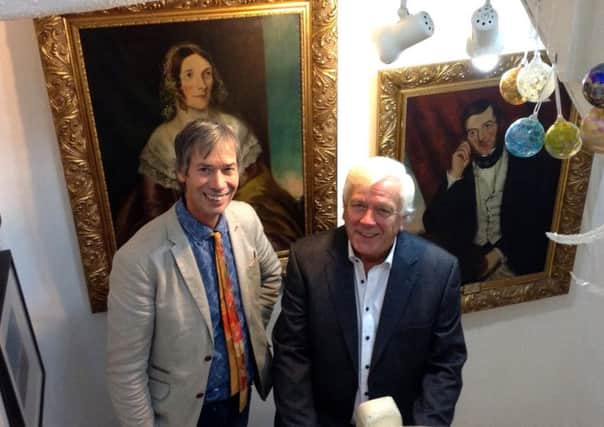Bramwell Bronte's bicentenary to be celebrated in Luddenden


At the gathering on Saturday, July 1 is local author Alan Titterington, whose ancestor John was a friend of Bramwell, folk singer John Bromley and theatre director Gareth Tudor Price, who will give readings of Branwell’s poetry.
Bramwell produced paintings of John and his wife Mary, which will be on display at the celebration.
Advertisement
Hide AdAdvertisement
Hide AdBranwell recorded his friendship with John Titterington in his Luddenden diaries and sketched him as the eponymous ‘St. John In The Wilderness’ during a meeting at The Talbot public house, Halifax, in January 1848.
Alan Titterington has recently published a novel called ‘St. John In The Wilderness’ and will be signing copies on the night.
In Alan’s novel his great-great-grandfather John relates his deeds of 1848 to a fellow debtors’ prison inmate and becomes partially released, under curfew, through the efforts of his devoted illegitimate son William who comes to his rescue gaining employment and lodgings at a butcher’s shop in The Shambles, York.
In the book novelist-sisters Charlotte and Anne Brontë, together with their friend Ellen Nussey make a visit to 43, Stonegate, on their way through to Scarborough at Whitsuntide 1849, where Anne was to die aged just twenty-nine a few days later. Laid to rest in Scarborough, Anne is the only member of the family to be buried away from Haworth.
Advertisement
Hide AdAdvertisement
Hide AdJohn and Mary return to Halifax where John, disowned by his own father, takes up a career as a textile consultant to other mill-owning families and re-establishes respectability through politics as friend and agent for prospective, later successful, member of parliament Sir Francis Sharp Powell.
John Bromley’s CD ‘From Higgin Chamber’ features in Alan’s novel and was recorded in a studio at Higgin Chamber, Boulderclough, near Sowerby, formerly the home and weaving mill of John and Mary Titterington. This three-storey mill features in the novel and was visible across a wide sweep of the Calder Valley on the night of the 9 th of September 1856 when it was dramatically destroyed by fire.
The Lord Nelson was one of Bramwell’s favourite drinking haunts from his time as station master at Luddenden Foot railway station.
Bramwell was born on June 26, 1817 and was the brother of Charlotte, Emily and Anne.
Advertisement
Hide AdAdvertisement
Hide AdIn 1838 Branwell set himself up as a professional portrait painter in a rented studio in Bradford. He made many friends among the artistic community of the Bradford pubs, but failed to make a living. In 1840 he took a position as tutor to a family at Broughton-In-Furness, Westmorland, but was sacked within a year. From October 1841 to April 1842 he worked on the Leeds-Manchester railway, first as a clerk at Sowerby Bridge, then as Clerk-In-Charge at Luddenden, where he missed a discrepancy in the accounts and was sacked.
Branwell eventually became dependent on alcohol and opium, and became ill, probably from tuberculosis, in 1848, and died on September 24.